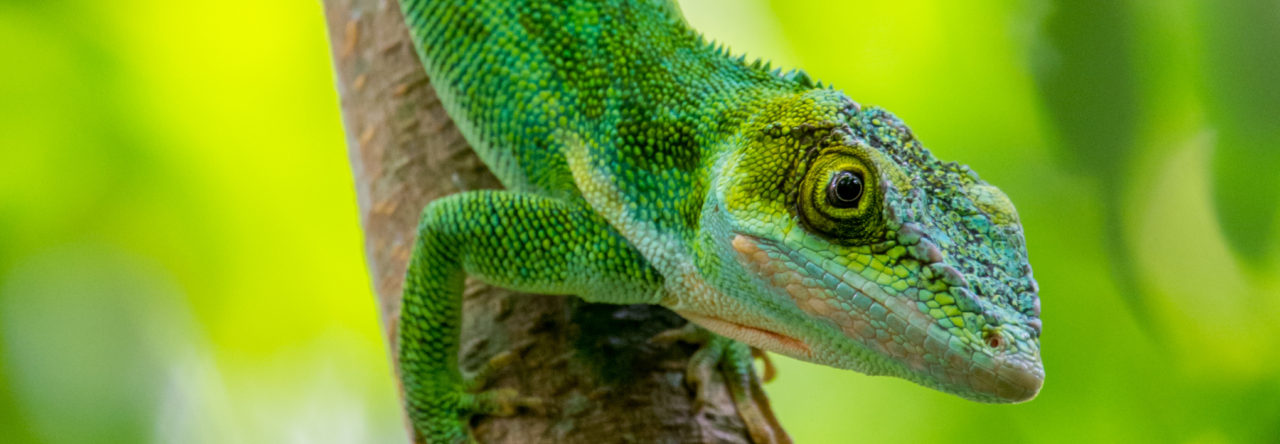 According to Williams and Rivero, the name occultus was chosen for the anole they described in 1965 because it means “hidden,” referring to the unexpected finding of a new species in such a well-trodden spot (“The discovery of so distinct a species in an island thought to be well known herpetologically and in which the anoles have received special attention must give us pause.”). But to the unknowledgeable, “occultus” sounds more mysterious, more preternatural, befitting such a spectral, gnome-like species that is so rarely seen and so little known.
According to Williams and Rivero, the name occultus was chosen for the anole they described in 1965 because it means “hidden,” referring to the unexpected finding of a new species in such a well-trodden spot (“The discovery of so distinct a species in an island thought to be well known herpetologically and in which the anoles have received special attention must give us pause.”). But to the unknowledgeable, “occultus” sounds more mysterious, more preternatural, befitting such a spectral, gnome-like species that is so rarely seen and so little known.
On a recent trip to western Puerto Rico, I was fortunate to visit a locality where they can be found readily at night. In a short evening, we found five clinging to the ends of twigs (as well as a dozen green giants). Naively, I thought that I’d come back during the day and locate some to see where they live when they’re active, and what they do. Ha! Much, much easier said than done. How do you find a little, camouflaged gray match-stick of a lizard in the dense vegetational matrix that is a tropical forest? The answer: you don’t, and I didn’t.

I’m thirsty! Photo by J. Losos. For more on drinking occultus, check out Manuel Leal’s recent post on Chipojolab.
Indeed, there are almost no data on the natural history of this species, except where it sleeps. The little that we do know suggests that they are just what they look like–twig anoles. Some of the few that have been found have been on twigs, though a surprising several have been on leaves or ferns. They seem to creep slowly, though no one has published a good behavioral description.
Since the description of this species in 1965, there has only been one paper written on the diurnal natural history of this species, published by Preston Webster in 1969–44 years ago (go ahead, read it yourself)! Someone needs to go out and find these guys and see what they do! How to do it? Go find them at night and come back before dawn and watch them as they wake up and get out of bed. And here’s a bonus–George Gorman published a paper suggesting they sleep in pairs–that’s right, pair-bonding twig anoles!
Note that these photos were taken of animals captured and placed on twigs, as was the lizard which subsequently started drinking raindrops discussed on Chipojolab.
- Evolution in Real Time on Lizard Island - March 23, 2025
- Spider Snags Adult Anolis osa - March 22, 2025
- An Homage to the Green Anoles of New Orleans - March 21, 2025




Daniel Scantlebury
I found Anolis “tranquilis” in pairs, too.
Alberto Lopez
Is there info on clutch size and egg size? I have an observation on this buried in my field notes somewhere, from an individual we were photographing once from Arecibo.
Cheers,
Alberto